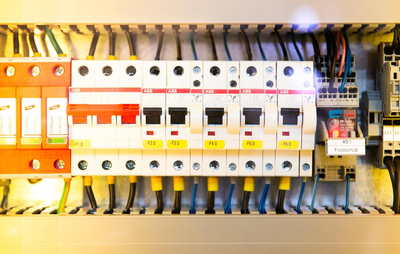Wiring Your Home
Contact UsKEEP EVOLVING
As technology in the 21st century keeps evolving, it is increasingly necessary to have your house wired properly. Structured wiring refers to running cables through the walls of your home that can carry all of the different signals required to integrate computer networks, home entertainment systems, cable or satellite TV, telephone, climate control and even home security systems, all operated by a central control or remotely through the Internet. What technology you want in your home will be strictly controlled by the wiring infrastructure you install. Get the wiring right and everything else is easy.
WHAT SHOULD I KNOW?
The following several paragraphs will help you to understand some of the need-to-knows when it comes to wiring your home. The first concern with our infrastructural wiring relates to electrical codes. The National Electrical Code (NEC) prescribes the following properties of the wire to be used in your walls:
- Reduce the spread of fire and smoke.
- Prevent shock.
- Comply with other requirements of the NEC.
"EVEN IF YOU DON'T PLAN ON INSTALLING EQUIPMENT AT EVERY LOCATION RIGHT AWAY, MAKE SURE YOU RUN THE CABLES TO THAT LOCATION. IT WILL SAVE YOU MONEY AND TIME IN THE LONG RUN."
All wiring used behind walls, under floors or otherwise installed as a structural component of the building must be properly rated. Even speaker wires that go inside the walls have to be rated as either Class 2 or Class 3. Next you need to decide on wire gauge and conductor count. How do you know what's right for the job? Well, let's look at the speaker wire, for instance. The distance from the audio amplifier to the speaker location is a major factor in deciding which wire is right for the installation. Every foot of speaker wire adds more resistance, capacitance and inductance to the performance equation. Shorter runs of wire that are twisted and shielded a certain way yield better sound quality.
Some tips for maximizing the performance of your structured wiring system include:
- For less than 50 feet to the speakers or volume control, 16AWG (gauge) works fine.
- From 50 feet to 100 feet, use 14AWG.
- For 100 feet or more, use 12AWG. Some additional good things to remember are:
- For primary sound where dynamic range is at a premium, use more copper.
- If you are wiring main speakers, use heavier gauge.
- Don't underestimate the value of shielding for reducing noise.
CONTROL SYSTEMS
Many of these systems can be extremely sophisticated and require professional installation and proprietary wiring. Our most consistent recommendation is to use at least CAT5e wiring for the control system. You should always consider 14/4 and Dual CAT-5e for more sophisticated systems or in instances where you want to distribute telecommunications as well as IR (infrared) and speaker-level audio. Remember to wire bathrooms, hallways and outdoor areas. There is no reason that whole house audio/video should not extend to these often-overlooked areas. Even if you don't plan on installing equipment at every location right away, make sure you run the cables to that location. It will save you money and time in the long run.




